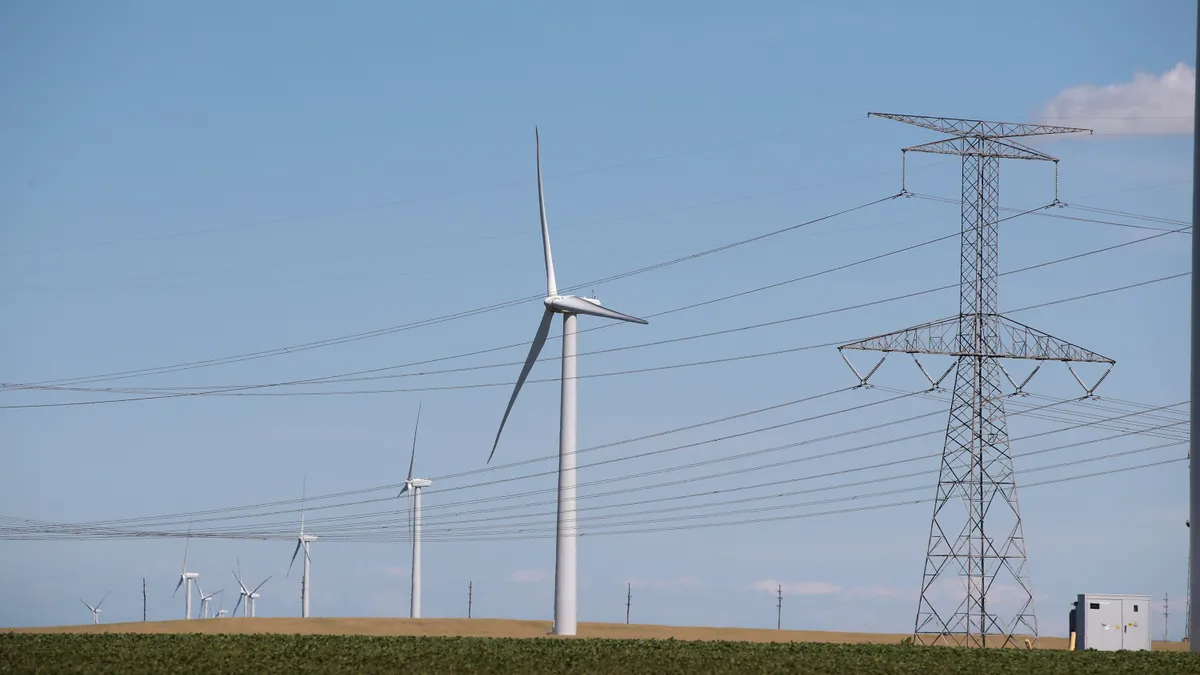State utility regulators would have a major role in regional transmission planning and determining how to share the costs of new transmission facilities under a Federal Energy Regulatory Commission proposal released Thursday.
"States are going to be at the heart of the planning," FERC Commissioner Mark Christie said during the agency's monthly meeting Thursday. "States are going to get the opportunity to agree to the criteria, and they're going to get the opportunity to agree to the cost allocation."
The proposal requires a regional planning and cost allocation process, but doesn't dictate specific outcomes, according to Christie. "We're giving maximum flexibility to the states and the regional planning entities in working out these arrangements," he said.
Increased state involvement could lead to greater success in building transmission lines as well as heightened consumer protections, according to some FERC commissioners.
"The proposal aims to facilitate states' influence and buy-in to regional planning and cost allocation in a manner that respects their jurisdiction and their individual priorities," FERC Commissioner Allison Clements said. "Because siting of any infrastructure is difficult and should minimize impacts, states' early participation in the process may help to improve outcomes."
The proposal, approved on a 4-1 vote, aims to encourage long-range transmission planning, which can boost grid reliability while saving consumers money, according to FERC Chairman Richard Glick.
"It's also going to address our nation's changing resource mix and the changing role of electricity in our society, and that's clearly coming with electrification," Glick said.
FERC Commissioner James Danly voted against the proposal, saying he feared it was designed to encourage certain types of generating resources and socialize the costs of state and local policy choices.
The proposal grew out of an advanced notice of proposed rulemaking, released in July, which sparked two rounds of comments from stakeholders last fall.
Long-range planning
On the planning front, the proposal requires regional transmission planners to identify transmission needs using long-term scenarios that include the effects of extreme weather, said David Borden, with FERC's Office of Energy Policy and Innovation.
Planners would need to evaluate the benefits of regional transmission facilities over at least 20 years, starting when they are set to be operating, Borden said during the FERC meeting.
They would also have to establish "transparent and not unduly discriminatory criteria" for approving potential transmission facilities that will have their costs allocated, Borden said. The FERC proposal offers a set of benefits that transmission planners can use in assessing the benefits of possible projects.
Transmission planners would also have to more fully consider dynamic line ratings and advanced power flow control devices as part of their planning, according to Borden. The requirement could make existing transmission lines more efficient.
Chaz Teplin, RMI principal for carbon-free electricity, praised the proposal's requirement for long-term planning.
"This type of planning is much more likely to connect the regions of the U.S. with valuable, low cost wind and solar to our load centers," Teplin said in an email Friday. "We are also happy to see that FERC is suggesting that grid planners include transmission's diverse benefits when allocating costs, an important improvement over the narrow benefits definitions common today."
State approval for cost allocation
State utility commissions would have to approve any cost allocation methods that are used to determine who pays for regional transmission projects, Borden said.
The proposal would bar developers of regional transmission projects from getting "construction work in progress," or CWIP, rate treatment, which allows them to recover their costs from ratepayers before a project is in operation.
"With CWIP, the consumers bear the risk of the project never even being brought into service," Christie said in support of the proposal. "The consumers act as an involuntary banker, lender to the developer."
Also, in an effort to reduce barriers to public power transmission development, FERC proposed allowing incumbent transmission owners to have a right-of-first-refusal for jointly-owned regional projects.
The proposal requires increased transparency for local transmission projects, which are typically built by incumbent utilities to replace aging power lines without putting the projects out to bid. It also requires improved coordination between regional and local transmission planning processes to help identify opportunities to "right-size" replacement transmission facilities, Borden said.
Interconnection queue reform up next
FERC left some issues that were raised in its ANOPR, such as generation interconnection reform, for a separate rulemaking process. FERC commissioners decided it would be more effective to have several rulemakings, Glick said Thursday during a media briefing.
Glick said he aims to issue a proposal to reform the generation interconnection process in the "very near future." There are about 1,400 GW of proposals, mainly solar, energy storage and wind, sitting in interconnection queues across the U.S., according to a report released this month by the Lawrence Berkeley National Laboratory.
Other upcoming issues deal with inter-regional transmission planning, changes to FERC's incentives for building transmission and oversight of the transmission process to help contain costs, according to Glick.
"My great hope is that we can … handle this," Glick said. "We just didn't think it was wise to do it all in one big rulemaking. So, again, I think there's support [among commissioners] for addressing all these other issues as well."
FERC will hold a technical conference on transmission cost management in October, according to Glick.
Right of first refusal
In its initial reaction, the Edison Electric Institute highlighted a provision in the proposal that would give incumbent utilities the right to build jointly owned regional projects without going through a competitive solicitation.
"The NOPR also recognizes the important role that investor-owned electric companies play in developing transmission by revisiting the decision in Order No. 1000 to eliminate the federal right of first refusal for projects selected for regional cost allocation," Phil Moeller, EEI executive vice president, business operations group and regulatory affairs, said in a statement.
EEI, a trade group for investor-owned utilities, wants FERC to eliminate the ROFR, which it says hinders transmission development.
But other groups are pushing to maintain the ROFR.
The Electricity Transmission Competition Coalition, a group that includes large energy users and non-incumbent transmission companies, said FERC's proposal doesn't appear to promote competition in transmission development.
"FERC should not only hold its ground on eliminating a federal ROFR, but also take steps to get rid of state level ROFRs," Paul Cicio, the advocacy group's chair, said in a statement. "Since FERC issued Order No. 1000, which was intended to promote electric transmission competition as a national policy, state level ROFR laws have only served to protect incumbent transmission owners and their ability to charge higher rates – one reason why studies show that only 3% of current transmission projects are subject to competition."























